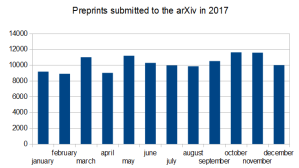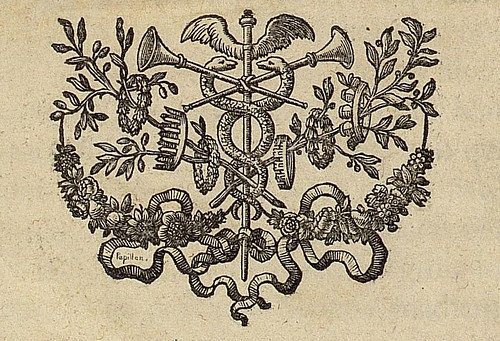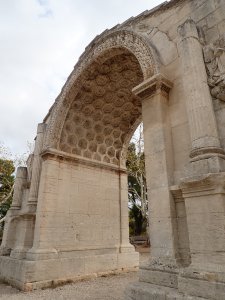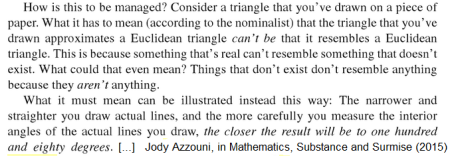[Posted on december 29, 2017.]
Since the last batch of preprints on the arXiv got out today (european time, at least) here are a few things I’ve noticed in 2017.
The 5th digit for monthly paper numbers was used several times, the precise numbers being : january=9186, february=8910, march=11008, april=9029, may=11194, june=10297, july=9980, august=9854, september=10517, october=11627, november=11589, december=10011. 
That’s a grand total of 123,202 papers in 2017. Sadly the number of different authors is not easily obtainable.
There were 113,380 submissions in 2016, so it’s an 8.66% increase this year. The increase from 2015 to 2016 had been of 7.69%, but since two new sections (Economics, and Electrical engineering & Systems Science) were started last september, that’s not directly comparable.
See also this page for an official graph of monthly submissions starting in 1994, while monthly download rates are equally fascinating (note the spike this very december!).
Assuming individual authors between 2015 and 2017 had on average a stable number of yearly submissions (of course giving, for a given author, a weight of  to his papers with
to his papers with  coauthors), this would imply an increase of about 8% new authors both in 2016 and 2017.
coauthors), this would imply an increase of about 8% new authors both in 2016 and 2017.
Who are they? Surely new PhD students for some part, but there are also folks who stopped publishing after obtaining their PhD two years ago, so the 8% figure is a balance between those two populations. This should be compared to an in-depth count of PhD offers worldwide over the past few years to confirm this scenario, but I don’t have the time to do it.
Should this fail (i.e. offers of PhD didn’t grow much between 2014 and 2016) then probably the initial assumption is incorrect, which would mean authors in fact are publishing more on average. I do wonder which alternative is the correct one…
[Edit (january 3): the official 2017 stats are now out.]

Winter solstice sunset over Antler Peak,
by Yellowstone National Park on flickr










